What It's Like To Ride The Fastest Electric Motorcycle?

By now I think we’ve beaten the electric motorcycle horse quite a bit. First there was the Electric Motorcycle Buyer’s Guide, where we gave you a glimpse at the electric offerings available today. From there we explored whether electric motorcycle racing will be the next big thing (answer: possibly!), we followed that up by exploring the pros and cons of electric motorcycles, then delved into the electric infrastructure and where to charge electric motorcycles (and cars, for that matter). Lastly, we explored the range of electric motorcycles to help enlighten people on just how far today’s electric motorcycles can actually go (and that range is getting better year after year).
Now we’re going to close our electric series with something a little different. Instead of exploring the future of electrics, or debating about their viability, we’re going to celebrate the one thing electrics do best: accelerate. Hard. And we’re going to highlight the visceral and emotional appeal of raw, unbridled acceleration, courtesy of what we now know as the Lightning LS-218. Back in 2012, when I was lucky enough to get an exclusive First Ride on it, the Lightning didn’t have a name – it had yet to achieve a one-way pass of 218 mph at the Bonneville Salt Flats, and thus was simply called the Lightning Superbike. I’m not surprised at the speed it achieved, though – to this day it remains the fastest motorcycle I’ve ever ridden, with the kind of warp speed acceleration you read about in Sci-Fi books (granted, I have yet to ride the Kawasaki H2R).
Read the link on the First Ride story to get the full scoop about the bike, but here’s a quick refresher: the LS-218 I rode featured a 12kWh battery partnered to the same liquid-cooled IPM motor used in the Chevrolet Tahoe hybrid SUV. After hearing that I’ll never forget what Richard Hatfield, CEO and Founder of Lightning Motorcycles told me: “If it can push a 6,000-pound truck, think of its performance in a 500-pound motorcycle.”
The nonchalant, matter-of-fact tone of his speech did nothing to prepare me mentally for the experience. I had seen videos of the very same bike I’d be riding racing around tracks like Sonoma Raceway and Laguna Seca, but I’d seen plenty of racing videos before. It didn’t hit home until it was my turn to give it a go. Unlike racing machines, where the initial roar of the exhaust upon startup gives a clue that what you’re about to pilot is something special, the Lighting doesn’t tip its hand. Flicking the Lightning on just lights up the dash. Sixty seconds later, and I’d be mesmerized. The plan was simple: haul ass to the bottom of the hill, wait for Hatfield to catch up, throw the bike in the back of his van, then get out. We were skirting the edges of legality with full race fairings, a paper plate, and a flimsy piece of paper with some sort of registration mumbo jumbo on it.
Rolling out from the famous Alice’s Kitchen I eased the e-throttle gently, only to be met with a jolt that quickly grabbed my attention. With a rough idea of what I was up against and not much road left to explore, it was time to give it the berries. Full whack of the throttle, and I was screaming like a schoolgirl inside my helmet (watch the video if you don’t believe me), using every muscle to hang on – my eyes working overtime to process the earth whizzing by. I’m fairly sure my arms grew an inch or two from getting pulled so hard.
Acceleration like that is intoxicating, so I had to twist the wrist every chance I got to feel that rush. You start to get used to the power, but the mind is working overtime, every time, to comprehend the sensations such brutal forward thrust introduces to the system. Otherwise, the Lightning brakes nicely for such a heavy motorcycle, and that weight is definitely felt navigating the bends from Alice’s to the bottom. But none of that really matters – the LS-218 is so terrifyingly fast and pulls with such ferocity that all we have left to do is thank the heavens and stars that such wild creations exist. Because motorcycles like this one help us rethink our definition of crazy – and that’s a good thing.

Troy's been riding motorcycles and writing about them since 2006, getting his start at Rider Magazine. From there, he moved to Sport Rider Magazine before finally landing at Motorcycle.com in 2011. A lifelong gearhead who didn't fully immerse himself in motorcycles until his teenage years, Troy's interests have always been in technology, performance, and going fast. Naturally, racing was the perfect avenue to combine all three. Troy has been racing nearly as long as he's been riding and has competed at the AMA national level. He's also won multiple club races throughout the country, culminating in a Utah Sport Bike Association championship in 2011. He has been invited as a guest instructor for the Yamaha Champions Riding School, and when he's not out riding, he's either wrenching on bikes or watching MotoGP.
More by Troy Siahaan



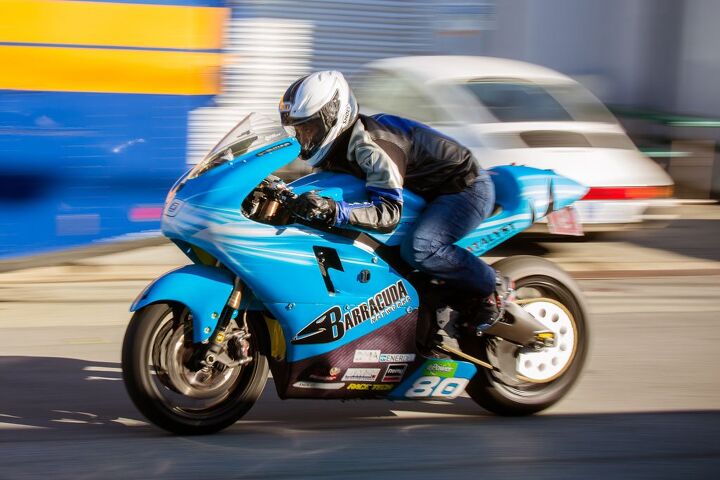

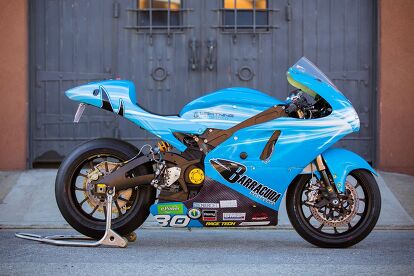










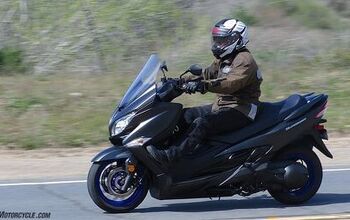
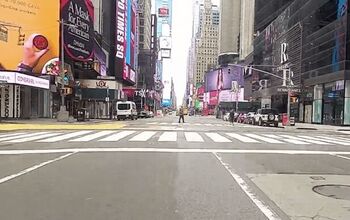








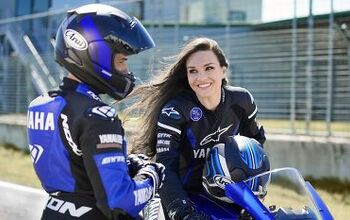







Comments
Join the conversation
Wait a sec, Triz-o...this guy's had prototypes since 2012 and he still doesn't have a street-legal demo bike? Has Hatfield sold any production bikes in the last 6 years?
You sure are beating the electric bike horse. I've yet to see one on the road. As for electric cars, I've seen less than 2 dozen, but then again i don't live in the city where they are more practical.